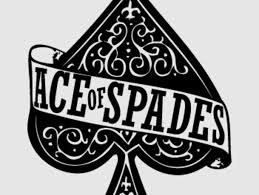What we perceive is a mixture of what our senses receive and what our brains expect
In day to day life, we do not perceive an exact replica of the world outside. Instead, our expectations colour what our senses are telling us; what we finally perceive is a blend of reality and expectation.
Imagine you look at a playing card, the Ace of Spades, with a completely open mind. The light from the card gets focused, by your lenses, onto your retina. The patterns formed on your retinal cells get relayed to the back of your brain, which tells you there is a large black spade shape in the middle of the card and an A with a smaller spade on two of the corners. If you know how a pack of cards work, your brain recalls that the card with that pattern is the Ace of Spades. Up until the part where your brain recalls what that patterned card is, the process described is called bottom-up processing because all the data is coming from the basic perceptive organs – the eyes.
Now imagine you look at it convinced it is going to be the ten of hearts. The light is focused onto the retina and the messages are sent to the visual cortex in exactly the same way. However, this time your brain (fully expecting the ten of hearts and saving resources and time by not paying proper attention) ignores those objective signals. They don’t even make it to consciousness and your final perception is that the card is the Ten of Hearts. This is an extreme example, but you get the idea. This is called top-down processing because what you finally perceive comes straight from the top (expectation in the brain).
Normal everyday perception has to involve both bottom-up and top-down processing, so that we can not only sense our environment, but also understand it. However, if our senses are rushed or if we are not putting the effort into proper attention, top-down processing becomes more dominant. When this happens our expectations become more influential in our final perception, distorting what our senses are telling us. What we perceive is a mixture of what our senses take in and what we expect.
For example, Bruner and Postman showed people cards very quickly, some of which were doctored to be different (such as an ace of spades being red instead of black). Some participants simply took longer to recognise the card, but some perceived a red ace of spades as being purple, They expected black but saw red, so their brains mixed the two and they perceived purple.
This happens to us all the time in everyday life. What we perceive is a mixture of what our senses receive and what our brains expect.
